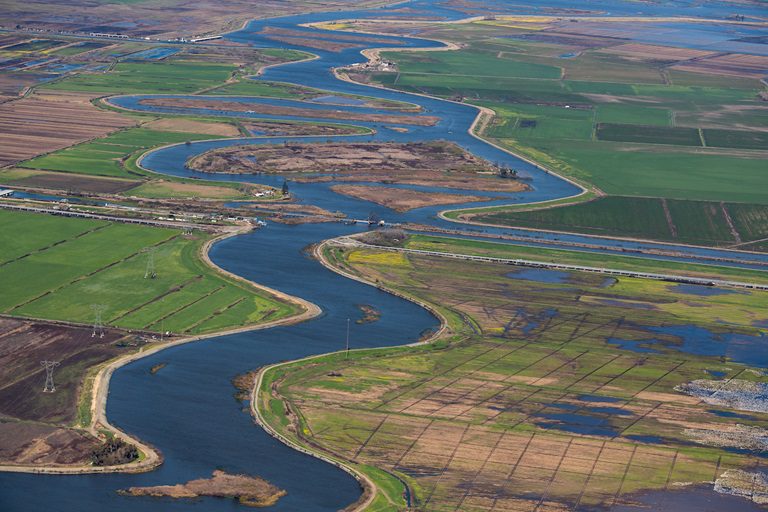February 20, 2023 – California recently experienced a very wet period after a three-year drought.
Unfortunately, there are still issues.
The State’s Department of Water Resources reports that the extreme wet conditions triggered a water quality standard that may lead to a reduction in the amount of water that can be stored or moved for both the State Water Project and the federal Central Valley Project. The Department of Water Resources and the U.S. Bureau of Reclamation are working in real time to manage the state’s water system and maximize water supply while protecting species and the environment.
Temporary Emergency Measures Requested.
Due to extreme weather swings, the agencies submitted a Temporary Urgency Change Petition (called a “TUCP”) to modify compliance with Delta water quality conditions, while proposing measures to avoid impacts on Delta smelt.
The request for the TUCP follows protective actions taken by the Department of Water Resources and Bureau of Reclamation under state and federal endangered species permits in late December and early January, including the “first flush” action to reduce pumping and allow storm runoff to flow through the system for the benefit of native fish species. The state reports that recent monitoring information shows the actions worked as intended, with key fish species moving downstream of the Delta and away from the direct influence of the State Water Project and Central Valley Project pumps.
The current problem lies in language in the water quality and water right permits that dictates that the two projects’ operations meet certain water quality conditions at specific compliance points in the Delta to provide for favorable conditions for endangered fish species. In consultation with the Department of Fish and Wildlife, the Department of Water Resources and Bureau of Reclamation, the State Water Project and Central Valley Project are requesting that the State Water Resources Control Board temporarily move the compliance point in the projects’ water rights permits from Port Chicago six miles east to Chipps Island. The alternative compliance point is anticipated to ensure water quality sufficient to protect beneficial uses.
Balance in a Continuing Drought.
If approved by the State Water Board, the temporary action would allow state and federal agencies to move and retain more stormwater and runoff in the state’s reservoirs in preparation for continued dry periods. Almost 300,000 acre-feet would be saved for later use by the State Water Project alone.
While the January storms provided much-needed rain and snowfall, they did not end drought conditions for much of the state, and California remains in a drought emergency. Regions that rely on the Colorado River system face increasingly severe water shortage conditions, and groundwater basins that serve communities in the Central Valley will not recover quickly from back-to-back years of drought and chronic overdraft.
Image: Aerial view of the Sacramento-San Joaquin River Delta , published by California Department of Water Resources.
, published by California Department of Water Resources.


Leave a Reply